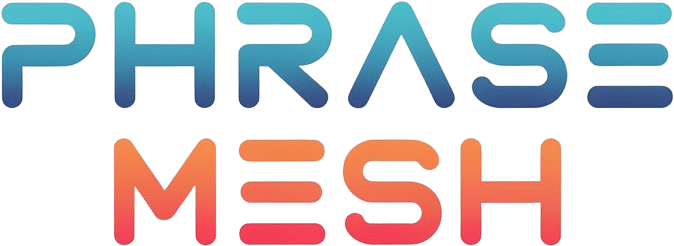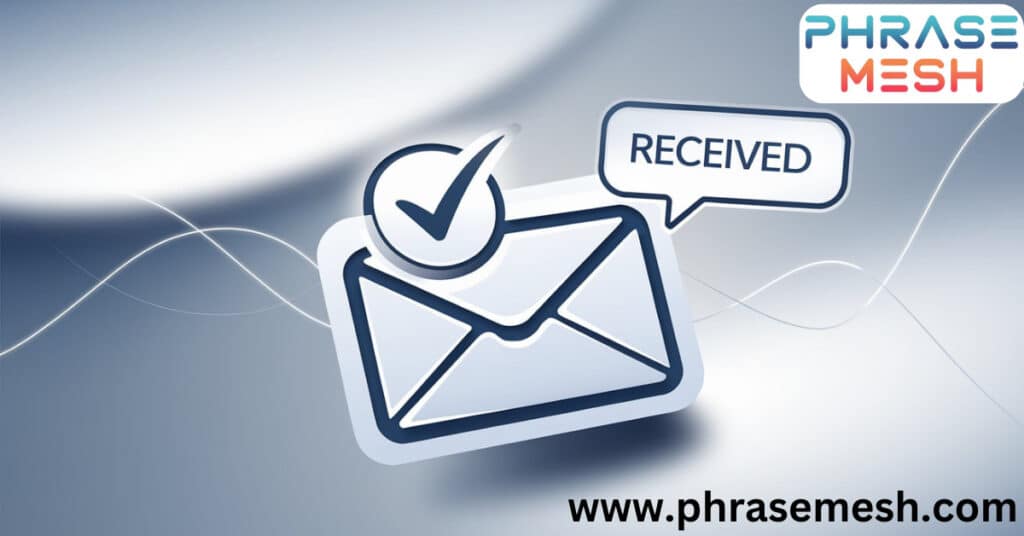In professional communication, ensuring that important messages are received and acknowledged is crucial. While “Please confirm receipt of this email” is a common phrase, there are many other ways to ask for confirmation without sounding repetitive. Whether you’re following up on a project update or making sure critical information is in the right hands, having a variety of ways to say “Please confirm receipt of this email” can improve your communication style.
This article provides 20 fresh alternatives, giving you creative, polite, and efficient ways to replace “Please confirm receipt of this email” in your everyday exchanges. Use these alternatives to maintain professionalism while ensuring your message is acknowledged, without overusing “Please confirm receipt of this email.”
What To Say Instead of “Please Confirm Receipt of This Email”
Here are the 20 ways to say “Please confirm receipt of this email” :
- “I’d love to hear your thoughts on this”
- “Can you give me a quick thumbs up when you’ve had a chance to review?”
- “Your input is crucial – please let me know you’ve received this”
- “Drop me a line when this lands in your inbox”
- “I’m eager to ensure this reaches you – mind sending a quick reply?”
- “Your go-ahead on this would be greatly appreciated”
- “Can you ping me back to confirm you’ve got this?”
- “I’d appreciate a quick nod that this has arrived safely”
- “Would you mind confirming you’ve received this? It’ll help me sleep better at night!”
- “Your eagle eyes are needed – let me know when you’ve got this!”
- “I’d appreciate a quick heads-up once you’ve received this”
- “Could you shoot me a quick ‘got it’ when this reaches you?”
- “Mind dropping me a line to confirm this landed safely?”
- “A quick confirmation would be super helpful”
- “Can you give this the green light when it hits your inbox?”
- “A short ‘message received’ would put my mind at ease”
- “Would you mind giving me a virtual high-five when you get this?”
- “A quick nod of receipt would be greatly appreciated”
- “Could you hit reply with a thumbs-up emoji when this arrives?”
- “Mind giving me a digital pat on the back once you’ve got this?”
1. “I’d love to hear your thoughts on this”

This approach does double duty. Not only are you asking for confirmation, but you’re also inviting feedback. It’s a great way to keep the conversation flowing.
Example:
Hi Sarah,
I’ve attached the latest project proposal for the Wilson account. I’d love to hear your thoughts on this. Could you take a look and let me know what you think by Friday?
Thanks, Alex
2. “Can you give me a quick thumbs up when you’ve had a chance to review?”
This casual, friendly tone works well for team environments where you’ve got a good rapport with your colleagues. It’s asking for verification without sounding too formal.
Example:
Hey team,
I’ve just uploaded the new marketing strategy to our shared drive. Can you give me a quick thumbs up when you’ve had a chance to review? I’m keen to get everyone’s input before our meeting next week.
Cheers, Emma
3. “Your input is crucial – please let me know you’ve received this”
Sometimes, you need to emphasize the importance of a response. This phrase does that while still asking for receipt confirmation.
Example:
Dear Dr. Richards,
I’ve attached the latest research findings for our upcoming paper. Your input is crucial – please let me know you’ve received this. I’m hoping we can discuss your thoughts during our call on Thursday.
Best regards, Samantha
Prayersunit serves as a guide for those seeking solace and spiritual growth. In today’s fast-paced world, finding moments of calm can be challenging. Prayersunit offers a way to pause, reflect, and find balance. It provides a structure for prayer, helping individuals connect with their beliefs and inner self.
4. “Drop me a line when this lands in your inbox”
For a more casual, friendly tone, this phrase works wonders. It’s asking for recognition of receipt without sounding demanding.
Example:
Hi Jamie,
I’ve just sent over the guest list for next month’s charity gala. Drop me a line when this lands in your inbox. We’ll need to start sending out invitations by the end of the week.
Thanks! Miguel
5. “I’m eager to ensure this reaches you – mind sending a quick reply?”

This approach shows consideration for the recipient while still requesting that important notification of receipt.
Example:
Dear Ms. Thompson,
Please find attached the contract for your review. I’m eager to ensure this reaches you – mind sending a quick reply? Once you’ve had a chance to look it over, we can schedule a call to discuss any questions.
Kind regards, Liam
6. “Your go-ahead on this would be greatly appreciated”
This phrase works well when you’re not just looking for confirmation of receipt, but also some level of approval or agreement.
Example:
Hi Karen,
I’ve outlined the proposed changes to our customer service policy in the attached document. Your go-ahead on this would be greatly appreciated. If you could let me know you’ve received this and share any initial thoughts, that would be fantastic.
Thanks, Raj
7. “Can you ping me back to confirm you’ve got this?”
For a tech-savvy crowd, this casual phrase can be a fun way to ask for feedback without sounding too formal.
Example:
Hey Dev team,
I’ve pushed the latest code updates to the repository. Can you ping me back to confirm you’ve got this? We’ll need to start testing these changes ASAP.
Cheers, Zoe
8. “I’d appreciate a quick nod that this has arrived safely”
This polite phrase adds a touch of humor to your request for affirmation, making it more likely to elicit a response.
Example:
Dear Mr. Johnson,
I’ve attached the revised budget proposal for Q3. I’d appreciate a quick nod that this has arrived safely. Once you’ve had a chance to review, perhaps we could set up a brief call to discuss any concerns?
Best, Olivia
9. “Would you mind confirming you’ve received this? It’ll help me sleep better at night!”
A dash of humor can go a long way in getting that crucial validation of receipt. This works especially well with colleagues you have a good relationship with.
Example:
Hi Tom,
I’ve just sent over the final designs for the new product packaging. Would you mind confirming you’ve received this? It’ll help me sleep better at night! Looking forward to hearing your thoughts when you’ve had a chance to look them over.
All the best, Sophia
10. “Your eagle eyes are needed – let me know when you’ve got this!”
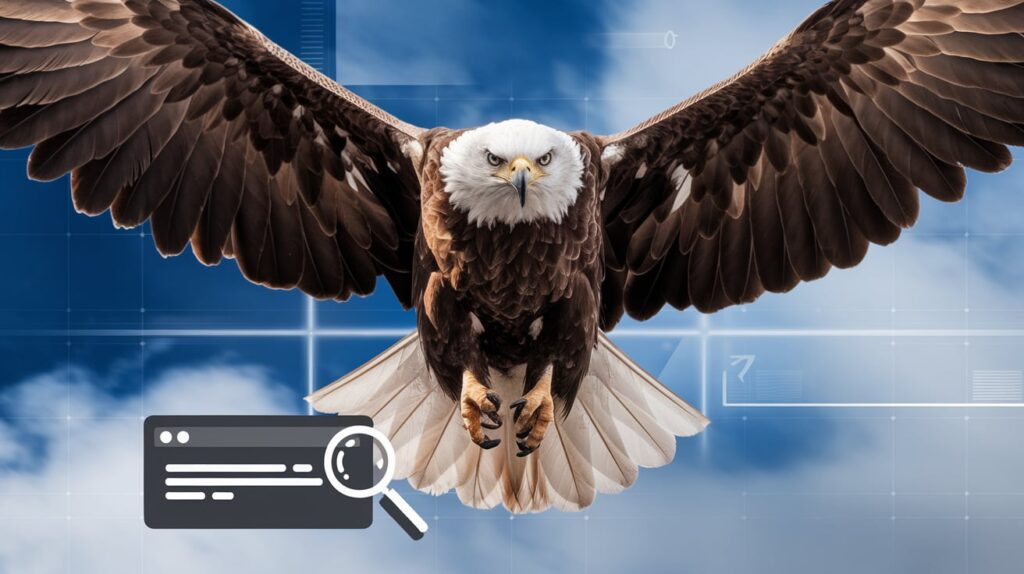
This playful phrase compliments the recipient while asking for that important indication of receipt.
Example:
Hey Lisa,
I’ve attached the draft press release for next week’s product launch. Your eagle eyes are needed – let me know when you’ve got this! I’m counting on your expert opinion to make sure we’ve hit all the right notes.
Thanks a million, Marco
11. “I’d appreciate a quick heads-up once you’ve received this”
This friendly phrase asks for a simple acknowledgment without sounding too demanding.
Example:
Hi Rachel,
I’ve just emailed the updated client presentation. I’d appreciate a quick heads-up once you’ve received this. We’ll need to finalize it by Thursday for the big meeting.
Thanks, Daniel
12. “Could you shoot me a quick ‘got it’ when this reaches you?”
This casual, colloquial approach works well in more relaxed work environments.
Example:
Hey Chris,
I’ve uploaded the new product specs to our shared folder. Could you shoot me a quick ‘got it’ when this reaches you? I want to make sure everyone’s on the same page before our brainstorming session tomorrow.
Cheers, Natalie
13. “Mind dropping me a line to confirm this landed safely?”
This polite request adds a touch of whimsy with the “landed safely” metaphor.
Example:
Dear Ms. Patel,
Please find attached the revised contract for your review. Mind dropping me a line to confirm this landed safely? Once you’ve had a chance to look it over, I’d be happy to discuss any questions you might have.
Best regards, Michael
14. “A quick confirmation would be super helpful”
This straightforward approach clearly states what you need without any frills.
Example:
Hi Team,
I’ve just shared the Q4 targets in our project management tool. A quick confirmation would be super helpful to ensure everyone’s in the loop. Let’s discuss these in detail during our next standup.
Thanks, Jessica
15. “Can you give this the green light when it hits your inbox?”
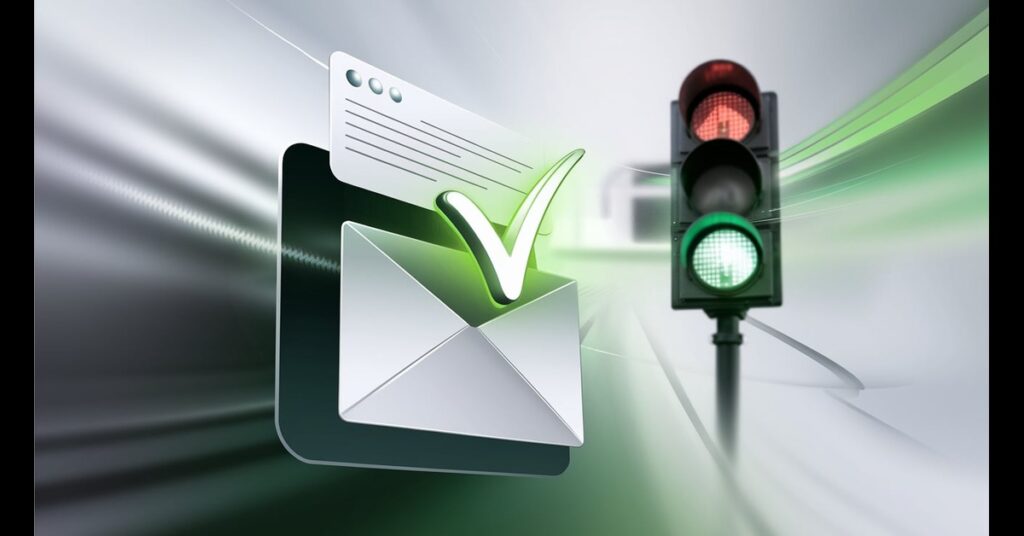
This phrase uses a traffic light metaphor to make the request more engaging.
:
Hey Alex,
I’ve sent over the final draft of our press release. Can you give this the green light when it hits your inbox? We’re on a tight deadline to get this out by end of day.
Appreciate it, Sam
16. “A short ‘message received’ would put my mind at ease”
This approach shows a bit of vulnerability, which can encourage a prompt response.
Example:
Dear Dr. Lee,
I’ve attached the latest research data for our upcoming publication. A short ‘message received’ would put my mind at ease. I’m looking forward to discussing your insights during our call next week.
Kind regards, Emily
17. “Would you mind giving me a virtual high-five when you get this?”
This playful request works well in casual team settings or with colleagues you have a good rapport with.
Example:
Hi Jamie,
I’ve just finished the first draft of our new website copy. Would you mind giving me a virtual high-five when you get this? Can’t wait to hear your thoughts!
Cheers, Tyler
18. “A quick nod of receipt would be greatly appreciated”
This formal yet friendly phrase is suitable for professional communications.
Example:
Dear Mr. Thompson,
Please find attached the proposal for the upcoming city planning project. A quick nod of receipt would be greatly appreciated. I’m available to discuss any aspects of the proposal at your convenience.
Sincerely, Laura
19. “Could you hit reply with a thumbs-up emoji when this arrives?”
This modern, emoji-based approach can work well in tech-savvy or creative industries.
Example:
Hey Design Team,
I’ve just shared the mood board for our new campaign. Could you hit reply with a thumbs-up emoji when this arrives? Let’s sync up tomorrow to brainstorm some ideas.
Thanks! Zack
20. “Mind giving me a digital pat on the back once you’ve got this?”
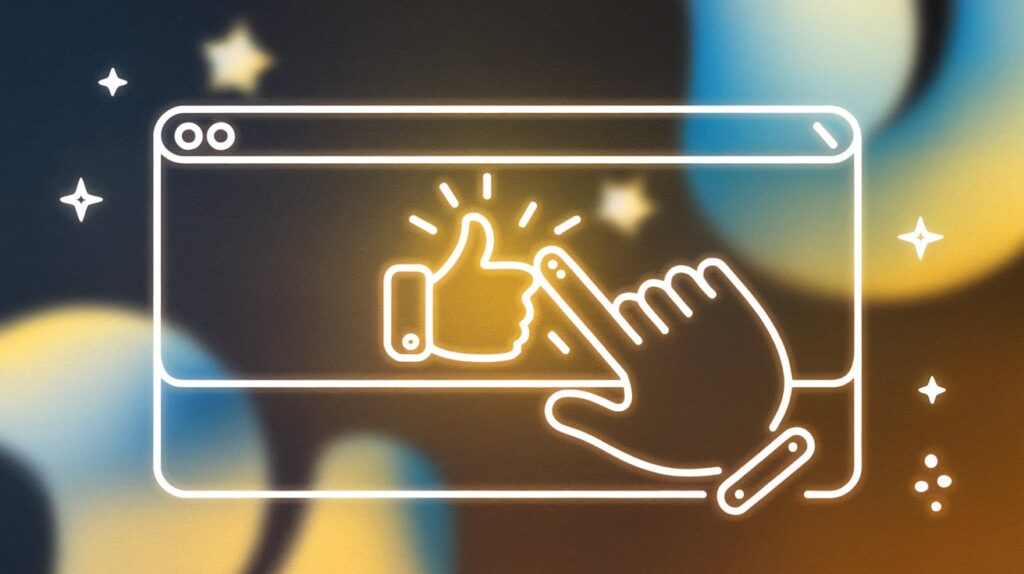
This humorous approach asks for both confirmation and a bit of encouragement.
Example:
Hi Sarah,
I’ve finally cracked the code on that tricky bug we’ve been dealing with. Mind giving me a digital pat on the back once you’ve got this? I’ve pushed the fix to our repository – let me know if you need me to walk you through the changes.
Best, Ryan
The Importance of Confirmation in Business Communication
In today’s digital age, where emails can get lost in overflowing inboxes, ensuring the delivery confirmation of crucial messages is more important than ever. Whether you’re sending a contract, a proposal, or simply trying to coordinate a meeting, getting that assurance that your email has been received can save time, reduce stress, and prevent misunderstandings.
Email tracking and read receipt features can be helpful, but they’re not foolproof. Many email clients allow users to disable these functions, and some people find them intrusive. That’s why a polite request for confirmation, couched in friendly, engaging language, remains one of the most effective ways to ensure your message has been received and acknowledged.
The Psychology Behind Effective Communication Follow-up
When crafting your request for corroboration, it’s important to consider the psychology behind effective communication. People are more likely to respond positively when they feel valued and respected. By using phrases that invite input, express appreciation, or add a touch of humor, you’re not just asking for a simple attestation of receipt – you’re building rapport and strengthening professional relationships.
Moreover, the way you phrase (Please Confirm Receipt of This Email) your request can significantly impact the likelihood of getting a response. A study by Boomerang found that emails that ask for a specific response are 50% more likely to get a reply than those that don’t. This underscores the importance of being clear and direct in your communication, while still maintaining a friendly and professional tone.
Best Practices for Ensuring Message Received
While the phrases we’ve discussed can certainly help in getting that crucial endorsement of receipt, there are other strategies you can employ to increase the chances of your email being noticed and acted upon:
- Use clear, specific subject lines: This helps your email stand out in a crowded inbox.
- Keep it concise: Long emails are more likely to be skimmed or saved for later (and potentially forgotten).
- Make your request visible: Don’t bury your need for confirmation at the end of a long email.
- Follow up: If you don’t receive a response, a polite follow-up can often do the trick.
- Consider timing: Sending emails when your recipient is likely to be checking their inbox can increase response rates.
The Role of Technology in Correspondence Verification
While personal touch is crucial in business communication, technology can also play a role in ensuring information receipt. Many email platforms and Customer Relationship Management (CRM) systems offer features like:
- Scheduled follow-ups: Automatically send a reminder if no response is received within a specified timeframe.
- Email open tracking: Get notified when your email has been opened (though this isn’t always 100% reliable).
- Link click tracking: Useful if you’ve included important links in your email.
However, it’s important to use these tools judiciously. Overreliance on technology can make your communications feel impersonal and automated. The goal is to strike a balance between efficiency and maintaining that all-important human connection.
Conclusion: The Art of Tactful Persistence
In the world of business, effective communication is an art form. It requires a delicate balance of clarity, persistence, and tact. By mastering the skill of politely requesting document acknowledgment or transmission confirmation, you’re not just ensuring your messages are received – you’re also demonstrating professionalism and attention to detail.
Remember, the key is to be clear about what you need (confirmation of receipt), while also being respectful of your recipient’s time and autonomy. Whether you’re seeking proof of delivery for a crucial contract or simply trying to coordinate a team meeting, these alternative phrases can help you get the acceptance and ratification you need without sounding like a broken record.
So the next time you’re tempted to type out “Please confirm receipt of this email,” why not try one of these alternatives? Your recipients (and your professional relationships) will thank you for it. After all, in the grand symphony of business communication, a little variation in your melody can make all the difference in achieving that perfect harmony of efficiency and rapport.
